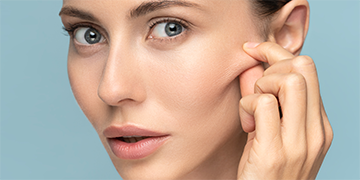Cryotherapy is a widely used dermatological treatment that involves using extreme cold to treat various skin conditions. From benign skin growths to more serious concerns like pre-cancerous lesions, cryotherapy has proven to be a highly effective procedure in modern skincare. This non-invasive method is favored for its minimal downtime and the ability to target specific skin issues without damaging surrounding tissues.
What Is Cryotherapy?
Cryotherapy uses liquid nitrogen or other freezing agents to freeze and destroy abnormal skin cells. The extreme cold temperatures cause the targeted skin cells to die, and over time, the treated area heals, allowing fresh, healthy skin to regenerate. It is commonly used to treat warts, skin tags, actinic keratosis (pre-cancerous lesions), and some forms of skin cancer.
How Cryotherapy Works
The procedure is relatively simple and quick, making it a convenient treatment option. A dermatologist applies liquid nitrogen directly to the affected area using a spray or a cotton-tipped applicator. The freezing process can last anywhere from a few seconds to a few minutes, depending on the size and type of the skin condition being treated. Most patients experience minimal discomfort, often described as a stinging or burning sensation during the treatment.
After treatment, the area may appear red or swollen, and in some cases, a blister may form as part of the healing process. The affected tissue will eventually scab and fall off, revealing healthy skin beneath. Recovery time varies but is typically complete within one to two weeks.
Conditions Treated by Cryotherapy
Cryotherapy is effective for treating a variety of skin conditions, including:
- Warts: Viral warts can be frozen off to prevent them from spreading or recurring.
- Skin Tags: These harmless growths can be easily removed with cryotherapy.
- Actinic Keratosis: Pre-cancerous patches of skin caused by sun damage can be treated to prevent them from developing into skin cancer.
- Seborrheic Keratosis: Non-cancerous skin growths that commonly appear as people age.
- Basal Cell and Squamous Cell Carcinomas: Early-stage skin cancers may be treated with cryotherapy when caught early.
Benefits of Cryotherapy
Cryotherapy offers numerous benefits, including its non-invasive nature, minimal side effects, and the ability to quickly treat small or localized skin concerns. The procedure is well-tolerated by most patients and can be performed in a dermatologist’s office. Cryotherapy also requires little recovery time, allowing patients to resume their regular activities shortly after treatment.
Conclusion
Cryotherapy is a versatile and effective treatment for various skin conditions. Its ability to precisely target problem areas without damaging healthy skin makes it a popular choice in dermatology. Whether you’re dealing with warts, skin tags, or pre-cancerous lesions, cryotherapy offers a quick, non-invasive solution. Always consult with a dermatologist to determine if cryotherapy is the right treatment for your skin condition.


